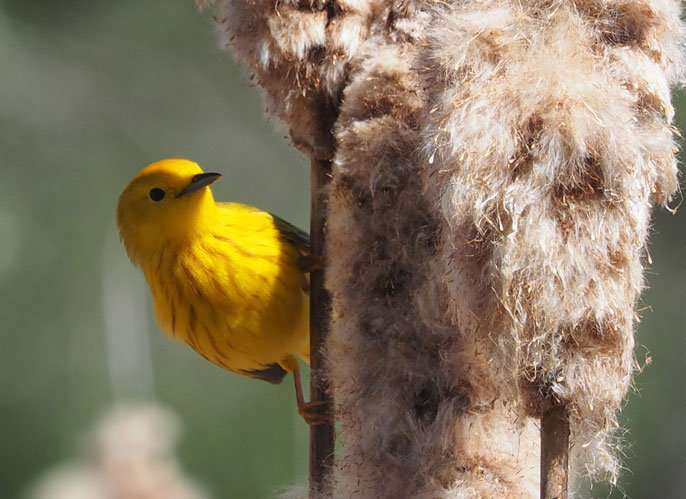How bird genetics adapt to climate change

As Earth's climate changes, species must adapt, shift their geographical ranges or face decline and, in some cases, extinction. Using genetics, UCLA biologists involved in the Bird Genoscape Project are racing against time to find out the potential for adaptation and how best to protect vulnerable populations of birds.
The project's most recent study, published in Science, focuses on the yellow warbler. Found across most of North America, the bird spends its winters in Central and South America, and flies as far north as Alaska and the Arctic Circle in the summer, filling wildlands and backyards with color and song along the way.
Using more than 200 blood, tissue and feather samples from across the breeding range, the researchers discovered genes that appear to be responding to climate, and found that bird populations that most need to adapt to climate change are experiencing declines.
UCLA evolutionary biologist Kristen Ruegg, adjunct assistant professor and senior author of the study, said previous studies focused on how long-term changes in temperature and precipitation cause bird species to shift their geographic ranges. Genetic mapping offers the opportunity to look at another option—the capacity to adapt to climate change.
"With this research, we can say 'based on these gene-environment correlations, here's how populations will have to adapt to future climate change. And here are the populations that have to adapt most,'" said Ruegg, who also is co-director of the Bird Genoscape Project.
Whether the yellow warbler will be able to adapt is another matter. "That's our next big question," Ruegg said.
Valuable information for conservationists
The new study uncovered some of the challenges yellow warblers already face. In some populations, genes associated with climate adaptation are mismatched to environments. These populations will likely have the hardest time adapting quickly enough to future climate shifts.
That's been the case in the past, too. Comparing the genetic findings to breeding bird surveys dating back to the 1960s that track changes in bird abundance, the researchers determined that the populations that need to adapt most are already in decline. Using genetic maps, the habitats of the populations most vulnerable to climate change can now be targeted for protection, said Rachael Bay, lead author of the study and a National Science Foundation postdoctoral fellow. The findings offer valuable information for conservationists who hope to protect species like the yellow warbler in the future, she said.
"Evolution has the potential to matter a lot when it comes to climate change response," Bay said. "It's a process we should start to integrate more when we make decisions, and it's shown a lot of promise that hasn't been realized yet."
The yellow warbler is not currently endangered. It was selected for the study to give researchers a better understanding of how genes relate to climate variables across its broad range. But the bird may serve as a canary in the coal mine for species that are more at risk.
"This is an alarm bell," said Tom Smith, a professor of ecology and evolutionary biology at UCLA and director of the Center for Tropical Research. "We spend a lot of time asking what is going to happen under climate change, what the effects will be and what we need to do to manage it. Our results shocked us—it's happening now."
The study sets the stage for two important next steps, Smith said. First, it means additional studies need to be done to learn how other species adapt to climate change. Second, the findings can be used now to tailor and inform future conservation management.
More information: Genomic signals of selection predict climate-driven population declines in a migratory bird. Science, 05 Jan 2018: DOI: 10.1126/science.aan4380
Journal information: Science
Provided by University of California, Los Angeles

















